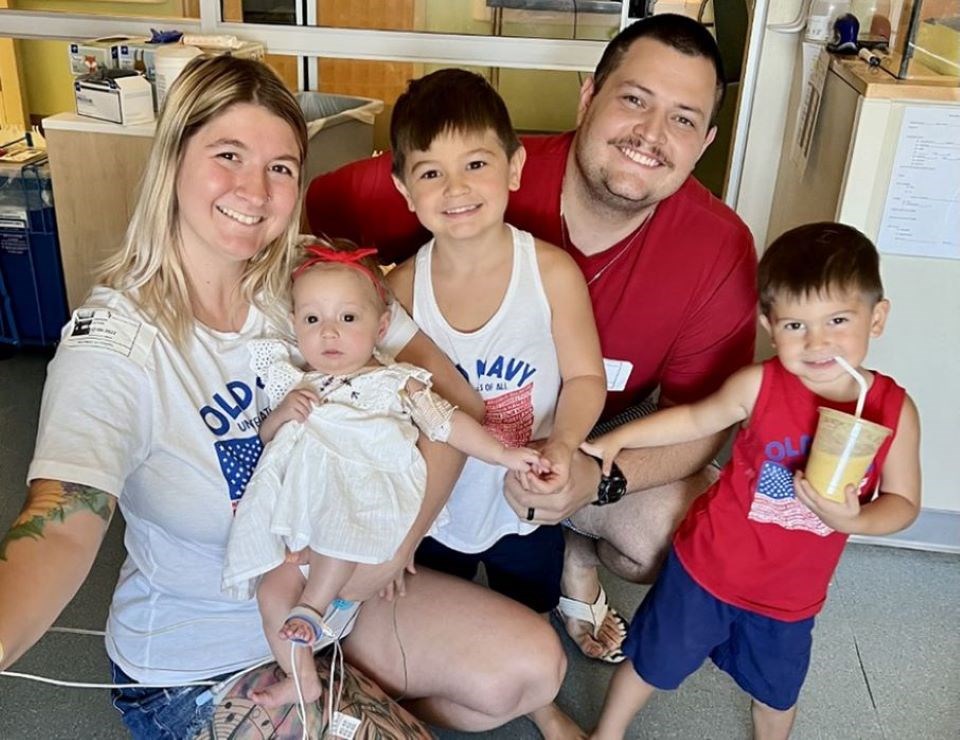Human milk is the best thing for babies said Kirsten Halstead, lactation clinical manager at Children’s Hospital Colorado. However, sometimes, especially for sick or premature babies, it isn’t enough to meet a baby’s needs. Using an analyzer, Children’s Hospital is now able to enhance a mother’s milk to match the nutritional demands of babies in the NICU.
Hollyrose Sutton is the second in her family to spent time in the Neonatal Intensive Care Unit, although her stay has been longer, at 141 days, said mother Amanda Sutton.
In utero, Sutton’s doctors discovered that Hollyrose suffered from a condition called gastroschisis — a birth defect where a hole in the abdominal wall allows the baby’s intestines to extend outside of the baby’s body.
Hollyrose was born with both her large and small intestines, part of her stomach and her right ovary outside of her body.
“She is considered an extremely complex case,” Sutton said.
Typically when babies are afflicted with this condition, they remain in the NICU for 6-8 weeks. Hollyrose’s stay lasted 141 days.
Her stay lasted so long, because her body reacted atypically and she experienced several setbacks, according to Sutton.
Throughout the process, the Nutrition and Lactation teams at Children’s Hospital kept a keen eye on Hollyrose’s nutrition, making sure she received all the nutrients she needed to get through the many surgeries and to heal as quickly as possible.
Children’s Hospital Colorado led the way in lactation services by being the first to create a human milk lab where lactation technicians prepare human milk for babies by supplementing it with other nutrients the baby needs.
Until recently, lactation specialists used an average assessment of protein and fat found in human milk. The exact numbers in a particular mother's milk were unknown on any given day because a mother’s milk can change day to day, Halstead said.
To solve this problem, Children’s purchased the first analyzer to be FDA approved in the U.S. to be used in hospitals for human milk. Now, the hospital can analyze a mother’s milk and know exactly what nutrients her baby is receiving through her milk and adjust it as needed.
Sutton was fortunate, when her milk was tested, it naturally had most of the protein and fats needed to help Hollyrose recover. However, for what her milk was lacking, the doctors were able to supplement.
According to Halstead, the analyzer also is used to regulate protein intake for infants with kidney disorders and to add in other nutrients, calories and minerals based on the baby’s needs at the time.
Although Sutton said she would always do whatever her children needed to ensure their health, she said she struggled mentally with the idea of doctors supplementing her milk.
“I was in the mindset of this is my milk, don’t touch it,” Sutton said. “It wasn’t until I got the results back and I saw everything, and I saw what she should be getting versus what I was making. While I was blessed enough to be making what she needed; it definitely was eyeopening to see.”
Feelings of inadequacy are common among moms, especially those with babies in the NICU.
“There is not a whole lot a mother can do to change the makeup of her milk,” Halstead said, adding that Children’s Hospital reassures mothers that their milk is still the best thing for the child.
The need to supplement a mother’s milk has nothing to do with a mom, Halstead pointed out. She said for most of the babies the analysis is used for are premature. In an ideal situation, that baby would still be inutero and getting the increased amount of proteins directly from the mother’s body. Since the baby has been born, a mother’s milk is typically created for a newborn who has different needs than an infant born at 23 weeks gestation, Halstead said.
Hollyrose is home with her family now, although she is struggling to gain weight, a challenge common with children with gastroschisis.
By testing her milk, Sutton said some of the mystery of why Hollyrose is not growing as quickly as is expected is removed, allowing her doctors to investigate other causes.



